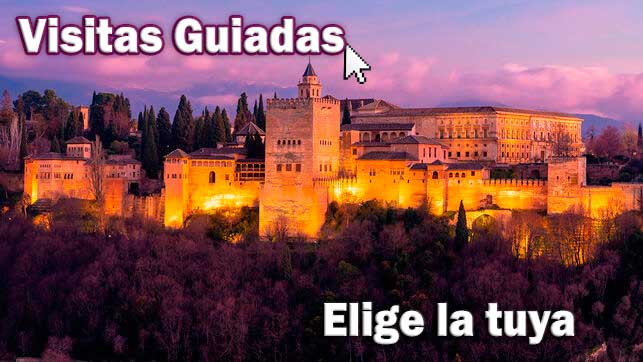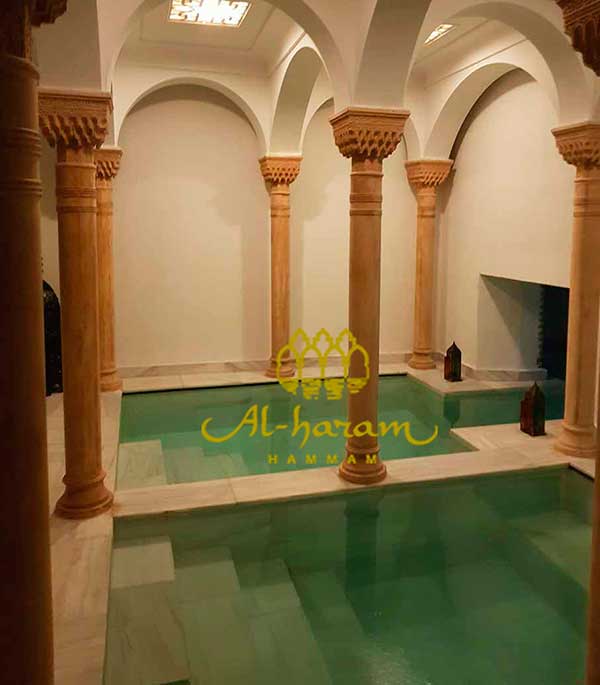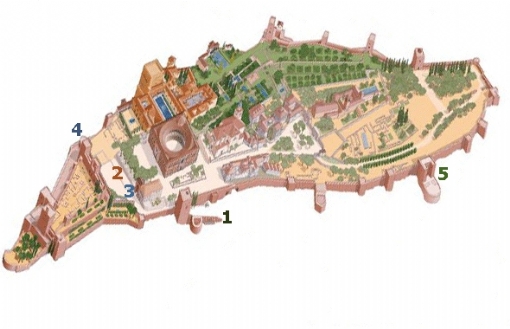
Gate of justice
Of the four exterior gates of the Alhambra's walled enclosure, the most monumental is the Puerta de la Justicia, built in 1348.
Next to it you can see a circular bastion of Christian artillery from which a carved stone wall descends, before which one of the masterpieces of the Granada Renaissance was carved, the Pilar de Carlos V.
In the middle of the Esplanade, there is another pillar, much more modest, dedicated to the writer Washington Irving by the city of Granada, on the occasion of the centenary of his death (1859).
The Puerta de la Justicia is also known as Puerta de la Esplanada because of the wide space that stretched out before it. His majestic figure presides over the entire space and has become one of the symbols of the Alhambra.
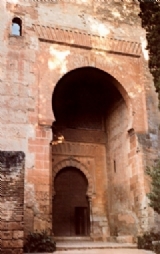 In fact, apart from its structural function, this Door has one of the most outstanding symbolic values of the Alhambra: the hand on the key of the great facade arch and the key on the key of the entrance arch (Islamic symbols), contrast with the Gothic image of the Virgin and Child, by Roberto Alemán, placed by order of the Catholic Monarchs on the foundational Arabic inscription on the door.
In fact, apart from its structural function, this Door has one of the most outstanding symbolic values of the Alhambra: the hand on the key of the great facade arch and the key on the key of the entrance arch (Islamic symbols), contrast with the Gothic image of the Virgin and Child, by Roberto Alemán, placed by order of the Catholic Monarchs on the foundational Arabic inscription on the door.
Four attached columns in whose capitals the profession of Muslim faith appears, frame the entrance gate that has preserved its iron-plated wooden leaves and other original fittings, recently restored.
The interior, as is characteristic of these defensive constructions, develops in a double bend, overcoming a pronounced unevenness, covered successively by arched vaults and a dome, painted with fake red brick, one of the characteristics of Nasrid architecture.
At the exit, at the request of the residents of the Alhambra in 1588, an Altarpiece, the work of Diego de Navas the Younger, was built in the place where the first Mass was celebrated after the conquest. The inner face of the Door preserves part of the precious original decoration of ceramic rhombuses in the spans of the horseshoe arch.
In front of it there is a wide street before the wall, at the foot of the wall, reinforced after the conquest by remains of sepulchral slabs. Continuing briefly the ascent of the street leads to the starting point of the official visit itinerary, the façade of the Puerta del Vino, in front of the Plaza de los Aljibes.
Plaza de los Aljibes
The name of this square comes from some wells that the Count of Tendilla built in 1494 in the ravine that separates the Alcazaba and the palaces. These wells, 34 meters long, 6 wide and 8 high, later became the current square by burying them together with the surrounding streets and squares. The square forms an extensive esplanade between the towers and defenses of the Alhambra on one side, and on the other through the Puerta del Vino and the Arab Palaces and the Palace of Carlos V, which shows us splendid views of the city, the Albayzín and the Sacromonte.
Once we have crossed the Puerta de la Justicia we will arrive at the Plaza de los Aljibes where the Puerta del Vino is located. The square owes its name to the water tanks that were built under it by order of the Count of Tendilla.
Wine Gate
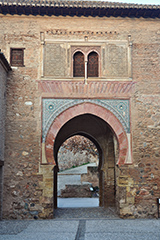 It was used for access, through Calle Real, to the Medina or City of the Alhambra, located in what is currently called "Alhambra Alta". The western façade (facing the Plaza de los Aljibes) is the oldest, and in it we can see the key that also appeared in the Puerta de la Justicia. It is one of the oldest buildings in the Alhambra, attributed to Mohamed II, the second Nasrid monarch. Although this gate is now isolated, in medieval times it was surrounded by a series of buildings that closed the Plaza de los Aljibes on this side.
It was used for access, through Calle Real, to the Medina or City of the Alhambra, located in what is currently called "Alhambra Alta". The western façade (facing the Plaza de los Aljibes) is the oldest, and in it we can see the key that also appeared in the Puerta de la Justicia. It is one of the oldest buildings in the Alhambra, attributed to Mohamed II, the second Nasrid monarch. Although this gate is now isolated, in medieval times it was surrounded by a series of buildings that closed the Plaza de los Aljibes on this side.
It seems that the Puerta del Vino is one of the oldest constructions of the Alhambra, perhaps from the time of Mohamed II. Today we find it isolated within the Plaza de los Aljibes although it was possibly part of a group of buildings that closed the aforementioned square.
Since 1556, the residents of the Alhambra deposited at this door the wine they consumed and that was exempt from taxes, which explains where the name of the door comes from, although there is another theory that says that its name comes from a simple mistake, a confusion between the words "Bib al-hamra '" (Red Door or Door of the Alhambra), which is supposed to be the original name of the door, and "Bib al-jamra" (Door of Wine), which would also prove that this was the door that allowed access to the Alhambra Alta.
The outer façade of the door is the oldest, it has a pointed horseshoe arch and lowered voussoirs in relief. On its lintel there is a symbol, a key with a cord, and a plasterboard that reads: "Glory to our Lord Sultan Abu 'Abd Allah al-Gani Billah" (Mohamed V). This façade has a twin balcony, as does the rear façade, of more modern construction.
On the back façade we can admire an arch with spandrels trimmed with polychrome brick decoration. Above the arch, there is a voussoir lintel that supports the second body, where it is located on the aforementioned twin balcony and in which it can be read at the crossing of its arches "Only God is victorious" next to the shield of the Nasrid kings.
This beautiful door has provided one of the favorite subjects of the British and French watercolorists who visited Granada in the 19th century. Claude Débussy was inspired by one of these images when he composed a piece, with a suggestively Spanish flavor, whose title is the same name of the door.
Arms Gate
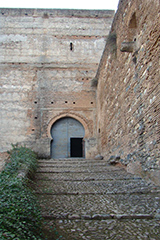 From the Barrio Castrense de la Alcazaba you can access one of the most beautiful and spectacular viewpoints of the entire Alhambra over the lower city of Granada, the Albaicín, the Sacromonte and the valley of the River Darro: the rooftop or terrace of the Puerta de las Arms, already named like that -Bib Silah- in a document from 1470.
From the Barrio Castrense de la Alcazaba you can access one of the most beautiful and spectacular viewpoints of the entire Alhambra over the lower city of Granada, the Albaicín, the Sacromonte and the valley of the River Darro: the rooftop or terrace of the Puerta de las Arms, already named like that -Bib Silah- in a document from 1470.
It is one of the four great exterior and official doors of the Alhambra and of them, the one that the people of Granada usually used. To enter the fortress, then, until the late fourteenth century, it was the one that communicated directly with the interior of Granada, leaving the other three outside the city walls. It is one of the main buildings that stand in the Alhambra, still in the 13th century, structurally and decoratively connecting with the Almohad tradition of a curved door.
Gate of the Seven Floors
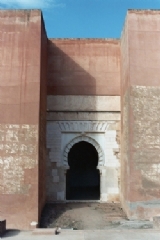
On the walk along the outer face of the Alhambra wall there are several towers and a gate: the Gate of the Seven Floors, one of the four exteriors of the enclosure.
This door gave access to the upper area of the Medina of the Alhambra, an area of the palace city of essentially artisan character. Built in the 14th century on a previous one, it was partially destroyed, like this entire sector of the wall, by the blowing up of Napoleonic troops in their withdrawal from the fortress in 1812.
The door could be rebuilt, in the sixties of the last century, thanks to the collection of old engravings and photographs. The circular bastion before her is the protagonist of one of Washington Irving's "Tales of the Alhambra".
Do you have any doubt? Call us
+34 958 91 80 29 From Monday to Friday 9.00 - 14.00 and 17.00 - 20.00Other Recommended Services
Choose your service

